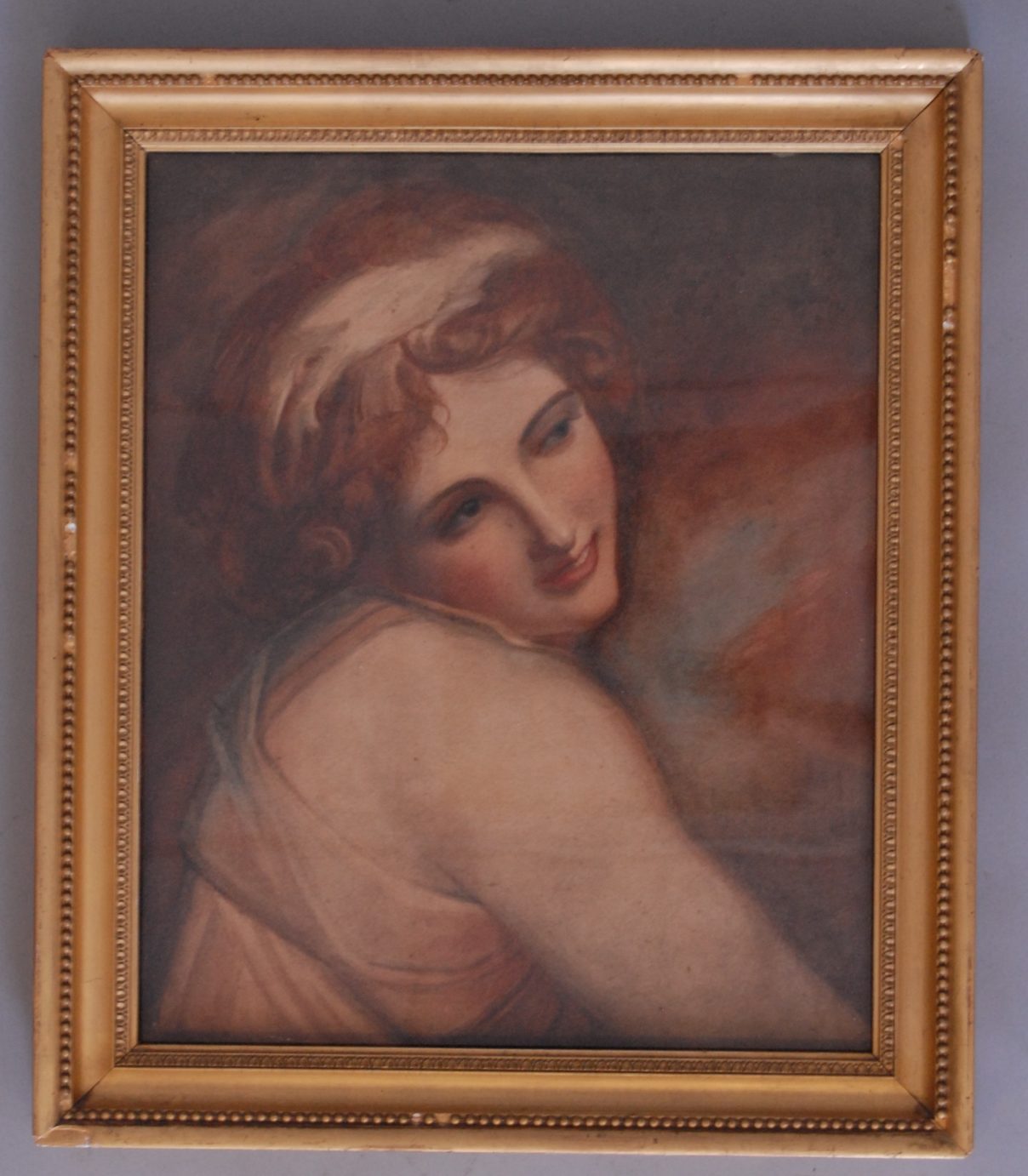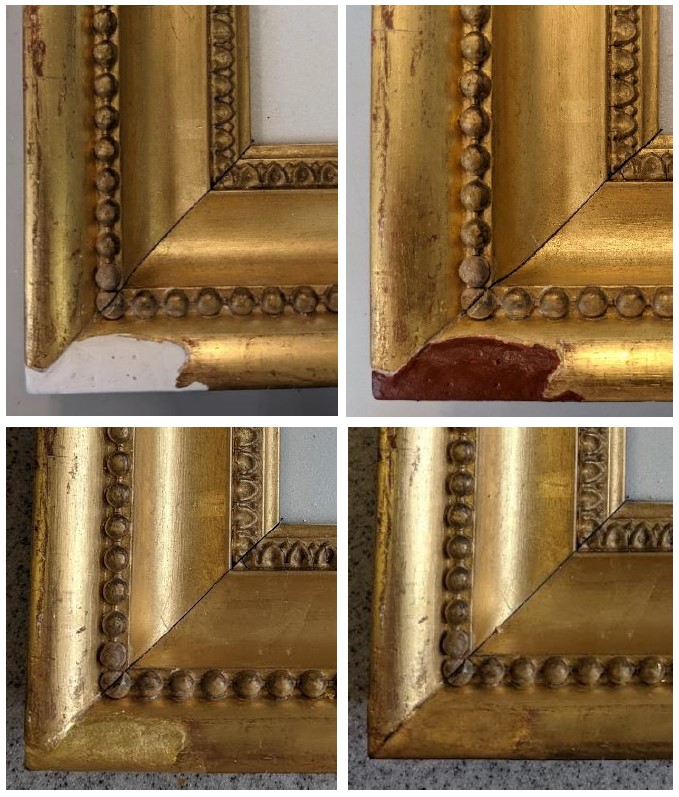Gilded Frame
Object

An oil gilded wood and composition frame with a decorative gilded surface layer. The frame has two strips of decorative mouldings on the face; the outermost is a beaded strip, whilst the innermost is leaf-and-tongue. The frame has been backed with a thin wooden backboard, on which there are remnants of a previous brown paper layer still attached.
The frame is part of the collections at Kiplin Hall and contains a watercolour painting produced by Emily de Grey. The painting is a copy of an 18th century original by George Romney of a woman (Lady Hamilton) glancing over her shoulder.
Emily de Grey is the mother of Bridget Talbot (the donor). This would put the production date of the painting between 1882 (when Emily de Grey and Bridget’s father Alfred Chetwynd-Talbot were married) and 1912 (the date she died).
Condition
- There are a number of areas of missing surface material
- Sections of previous conservation were visibile in the form of acrylic overpainting
- A small patch of mould was visible on the top edge of the frame
- Several areas of the frame displayed cracks and flaking surface material
Conservation
Initially the frame was cleaned using soft brushes and a vacuum cleaner to remove dust and loose surface dirt. The frame was then spot tested using deionised water to determine the nature of the gilding (oil vs. water) and as no ill effect was noted, the frame was likely oil gilded.

Before wet cleaning could begin, the mould on the top edge of the frame was removed using cotton swabs with a suitable solvent. The frame was then fully wet cleaned using cotton wool swabs with an appropriate solvent solution. This cleaning method allowed the surface dirt to be removed from the frame without causing damage.
Areas where cracking and flaking surface material were visible were consolidated in order to help stabilise the surface. A suirtable consolidant was chosen and was applied to the surface using soft brushes.
The old acrylic paint, which was distracing the eye from teh original gilding was removed using cotton wool swabs with deionised water. Although this showed evidence of past treatment, the decision was made to remove the paint in order to re-gild those areas instead and create a more uniform surface.

In order to replicate the missing surface material from the frame, moulds were taken of existing decoration using siligum. Casts were then created using these moulds from Polyfilla and neutral ph adhesive. In order to match these casts to the original surface material, they were gilded and then colour matched to an aged, slightly distressed state. The casts were then adhered to the surface using a suitable adhesive.
Areas of missing surface material which could not be replicated via moulding and casting had to be filled directly onto the frame. An adhesive barrier layer was applied to the area of missing surface material first in order to allow the film to be removed in the future if necessary. These fills were sanded until smooth and flush with the original surface material, then gilded and colour matched in the same way as the cast fills.
